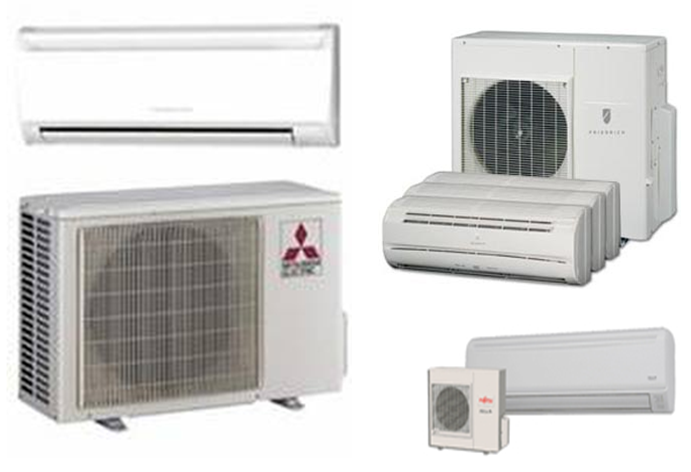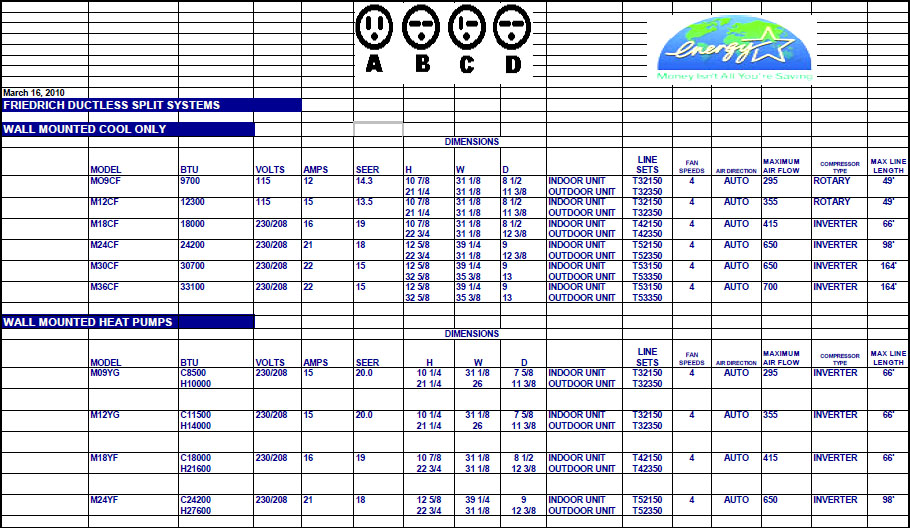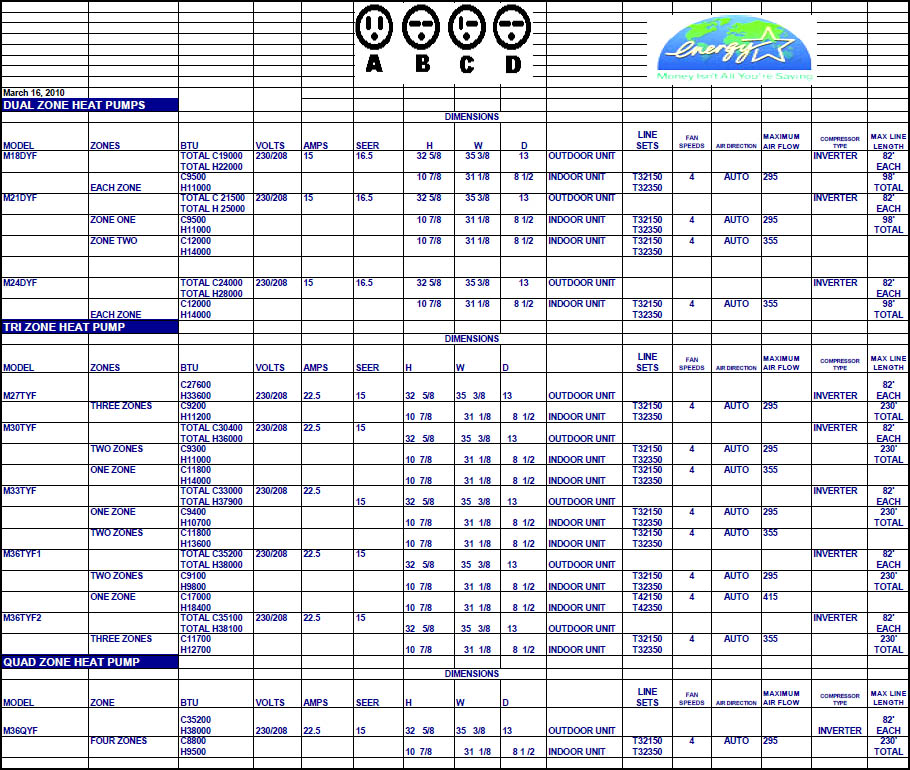


1. Why choose a Ductless mini split air conditioner?
A mini split air conditioner is a cost effective alternative to central air conditioning. However, it is typically more expensive than a wall or window air conditioner and needs to be professionally installed. Since the compressor sits on the outside, the split air conditioner is very quiet and efficient. Also, since mini splits have no ducts, they avoid the energy losses associated with the ductwork of central forced air systems. Duct losses can account for more than 30% of energy consumption for space conditioning, especially if the ducts are in an unconditioned space such as an attic.
2. Are there additional benefits?
Mini split air conditioners are sometimes easier to install than other types of air conditioning systems. For example, the hook-up between the outdoor and indoor units generally require only a three inch hole through a wall for the conduit. Also, most manufacturers for this type of system will provide a variety of lengths of connecting conduits. This way, it is possible to locate the outdoor unit as far away as 50 feet from the indoor evaporator for cooling rooms on the front side of a building or house with the compressor in a more inconspicuous place on the outside of the building.
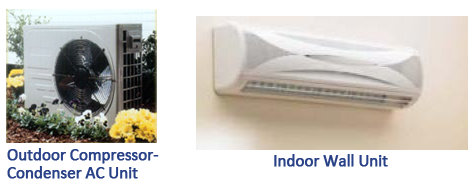
In comparison to other add-on systems, split air conditioners offer more flexibility in interior design options. The indoor air handlers can be suspended from a ceiling, mounted flush into a drop ceiling, or hung on a wall. Floor-standing models are also available. Most indoor units have profiles of about seven inches deep and usually come with sleek, high tech jackets. Many also offer a remote control to easily turn the split air conditioner on and off when it's positioned high on a wall or suspended from a ceiling.
3. What are Ductless mini split air conditioners?
Like central air conditioning units, mini split air conditioners have two main components: an outdoor compressor/condenser, and an indoor air-handling unit. A conduit, which houses the power cable, refrigerant tubing, suction tubing, and a condensate drain, links the outdoor and indoor units through a small hole that is drilled in the wall of the building. The main advantages of split air conditioners are their small size and flexibility for zoning, heating, or cooling individual rooms. Some split air conditioners can have as many as four indoor, air handling units (for four zones or rooms) connected to one outdoor unit. The number depends on the amount of heating or cooling required for each building or zone (also affected by how well the building is insulated). Since each of the split air conditioner zones or rooms will have an individual thermostat, only that area where someone is present needs to be conditioned, saving energy and money.
4. How does a Ductless mini split air conditioner work?
Evaporative cooling systems operate by a simple method of drawing a large amount of air through a water-saturated membrane. The resultant underlying heat exchange produces a beneficial temperature fall of up to 59°F (15°C) in dry air settings. It is worth remembering that evaporative cooling systems are not suitable for use in humidity controlled environments.
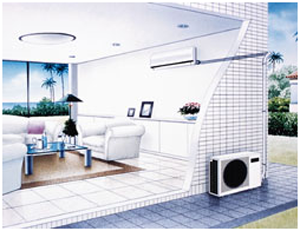
PRODUCTS:
Fujitsu Ductless Mini Split info : http://www.fujitsugeneral.com/products.htm
Mitsubishi Ductless Mini Split info : http://www.mehvac.com/
Daikin mini split : http://www.daikinac.com/residential/productsUnits.asp?sec=products&page=55
Sanyo mini split: http://us.sanyo.com/hvac
Soleus Split AC : http://www.soleusair.com/soleusair/commercial.html
Pridiom Split AC : http://pridiom.com/
